Managing a home while balancing work, family, and personal life can feel overwhelming. The good news? Simple organization systems can cut your daily cleaning time in half while keeping your space consistently tidy. These proven methods work for real families with real schedules.
The Science Behind Organization and Time Management
Research shows that clutter has a strong negative impact on perceived well-being. When your space is organized, your mind feels clearer, and daily tasks become faster and more efficient.
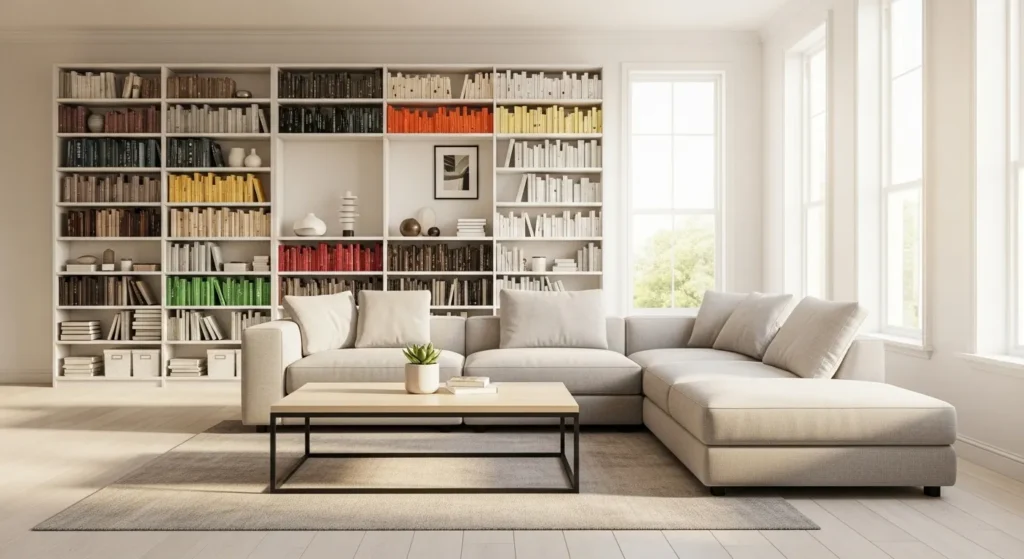
Quick Start: The 15-Minute Daily Reset System
Start each morning or end each evening with a 15-minute reset. This simple habit prevents clutter from accumulating and keeps your home guest-ready.
What to Include in Your Daily Reset:
- Make beds in every bedroom
- Load or unload the dishwasher
- Wipe down kitchen counters
- Put items back where they belong
- Sort mail immediately
Pro Tip: Set a timer for 15 minutes. You’ll be surprised how much you can accomplish when working with focused urgency.
The Three-Box Decluttering Method
Professional organizers recommend the three-box method for quick decluttering. This system works for any room, closet, or drawer.
How It Works:
- Keep Box: Items you use regularly and love
- Give Away Box: Items in good condition you no longer need
- Toss Box: Broken, expired, or worn-out items
Room-by-Room Application:
- Kitchen: Start with one cabinet or drawer
- Bedroom: Focus on nightstands and dresser tops first
- Living Room: Clear coffee tables and side tables
- Bathroom: Tackle medicine cabinet and under-sink storage
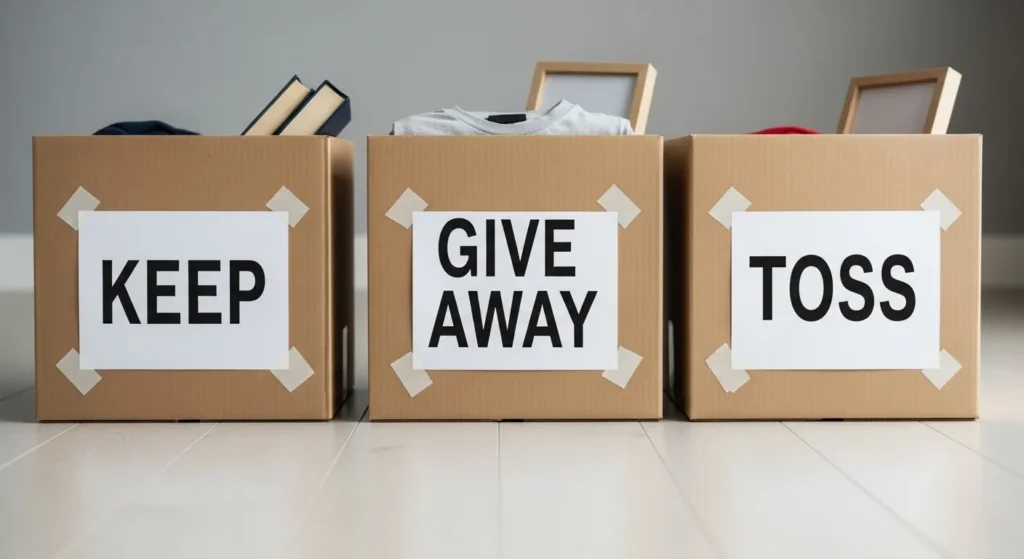
Zone-Based Organization for Maximum Efficiency
Create specific zones for different activities. This reduces the time spent searching for items and streamlines your routines.
Essential Home Zones:
- Command Center: Keys, mail, calendars, and charging station
- Launch Pad: Bags, shoes, and jackets near the main entrance
- Meal Prep Zone: Cooking utensils, cutting boards, and prep containers
- Homework Station: School supplies, reference books, and good lighting
The “Never Leave Empty-Handed” Rule
Professional organizers recommend scanning each room before leaving to see what can be returned to its proper place. This habit takes seconds but prevents clutter buildup.
Examples in Action:
- Take dirty dishes to the kitchen when leaving the living room
- Grab laundry when going upstairs
- Return books to shelves when passing the bookcase
- Put toys in bins when walking through play areas
Time-Saving Storage Solutions
Smart storage reduces the time needed to find and put away items. The key is making storage accessible and logical.
Storage Best Practices:
- Store frequently used items at eye level
- Use clear containers so you can see contents quickly
- Label containers on multiple sides for easy identification
- Keep storage simple – complex systems often fail
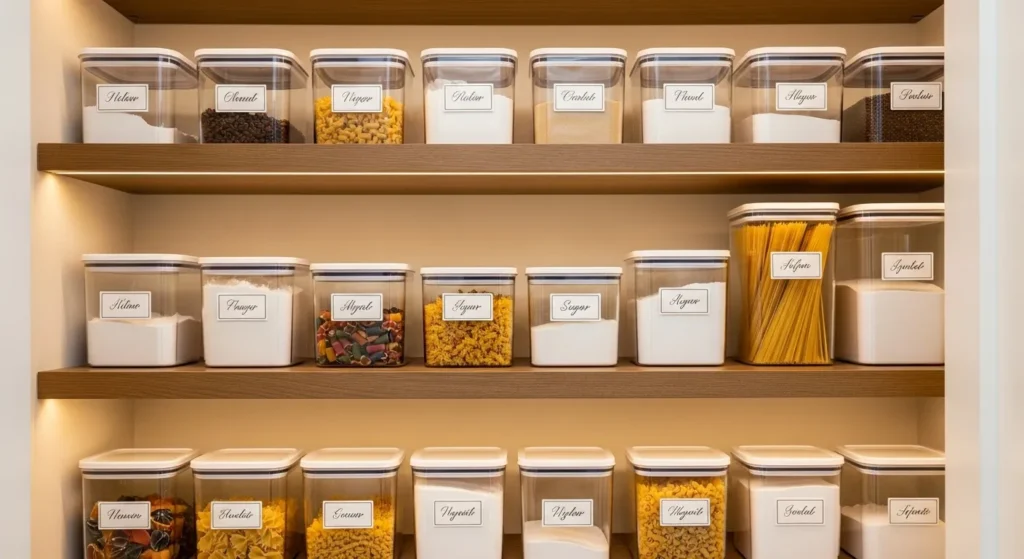
The 10-Minute Pickup System
Set aside 10 minutes each day for family pickup time. Everyone participates, making it faster and teaching responsibility.
How to Make It Work:
- Choose the same time each day (before dinner works well)
- Assign each person a specific area or type of item
- Play upbeat music to make it fun
- Celebrate when finished
Digital Organization for Physical Efficiency
Your phone and computer can streamline home management tasks significantly.
Digital Tools That Save Time:
- Grocery apps with shared family lists
- Calendar apps for appointment scheduling
- Photo storage for important documents and warranties
- Meal planning apps that generate shopping lists
The Two-Minute Rule for Instant Results
If a task takes less than two minutes, do it immediately rather than adding it to your to-do list. This prevents small tasks from becoming overwhelming piles.
Two-Minute Tasks Include:
- Putting dishes in the dishwasher
- Making the bed
- Wiping bathroom counters
- Filing important papers
- Responding to quick texts or emails
Seasonal Organization Strategies
Rotate items seasonally to keep storage spaces manageable and reduce daily decision fatigue.
Seasonal Rotation Tips:
- Store off-season clothes in under-bed boxes
- Switch decorative items quarterly
- Rotate toys to maintain novelty and reduce clutter
- Pack holiday items immediately after use
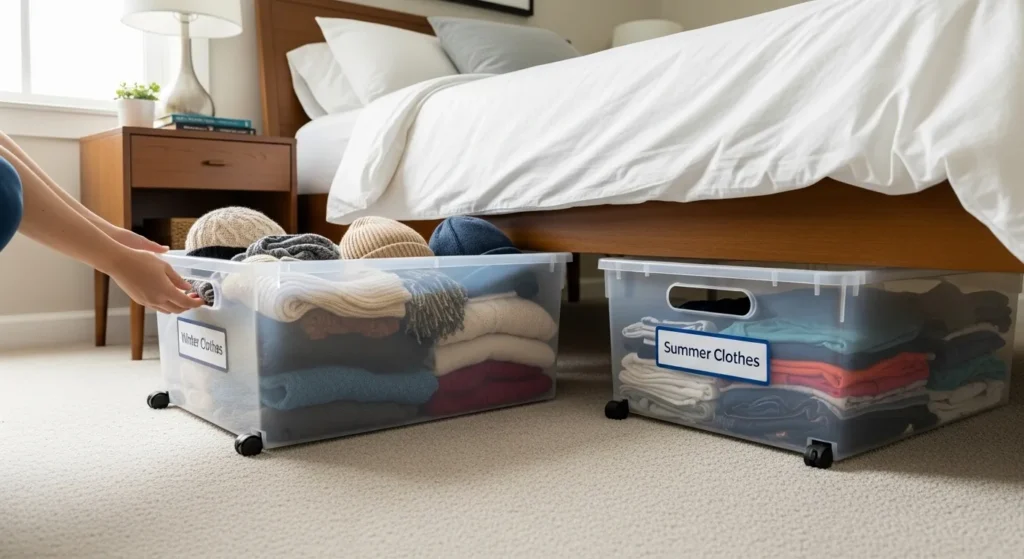
Kitchen Organization for Meal Efficiency
The kitchen requires special attention since it’s used multiple times daily. Smart organization here saves significant time.
Kitchen Time-Savers:
- Group similar items together (all baking supplies in one area)
- Store items where you use them (coffee supplies near the coffee maker)
- Use drawer dividers for utensils and small items
- Keep counters clear except for daily-use appliances
For more kitchen organization ideas, check out our closet organization guide for small spaces which includes storage principles that work throughout your home.
Bathroom Organization Made Simple
Bathrooms accumulate clutter quickly due to daily use by multiple family members.
Bathroom Organization Systems:
- Use drawer dividers for cosmetics and toiletries
- Install wall-mounted storage to maximize floor space
- Keep cleaning supplies under each sink they’ll be used
- Designate specific shelves or areas for each family member
Creating Maintenance-Free Systems
The best organization systems work even when you’re tired, busy, or under the weather. Design systems that require minimal effort to maintain.
Maintenance-Free Principles:
- Make putting things away easier than leaving them out
- Use open storage for frequently accessed items
- Choose storage locations based on where items are naturally used
- Involve all family members in creating and maintaining systems
Teaching Kids Organization Skills
Children can learn organization skills that benefit the whole family and reduce your workload.
Age-Appropriate Organization Tasks:
- Ages 3-5: Put toys in designated bins
- Ages 6-8: Make beds and organize school supplies
- Ages 9-12: Manage their own laundry system
- Ages 13+: Organize personal spaces and contribute to family systems
Troubleshooting Common Organization Problems
Even the best systems sometimes need adjustments. Here’s how to fix common issues:
When Systems Fail:
- Problem: Items don’t get put away Solution: Make storage more convenient than current habits
- Problem: Family members don’t follow systems Solution: Involve them in creating solutions that work for their habits
- Problem: Clutter returns quickly Solution: Reduce the number of items you own rather than adding more storage
The Psychology of Staying Organized
Understanding why we accumulate clutter helps create lasting solutions.
Common Clutter Causes:
- Keeping items “just in case”
- Emotional attachment to objects
- Lack of designated storage spaces
- Purchasing items without considering storage needs
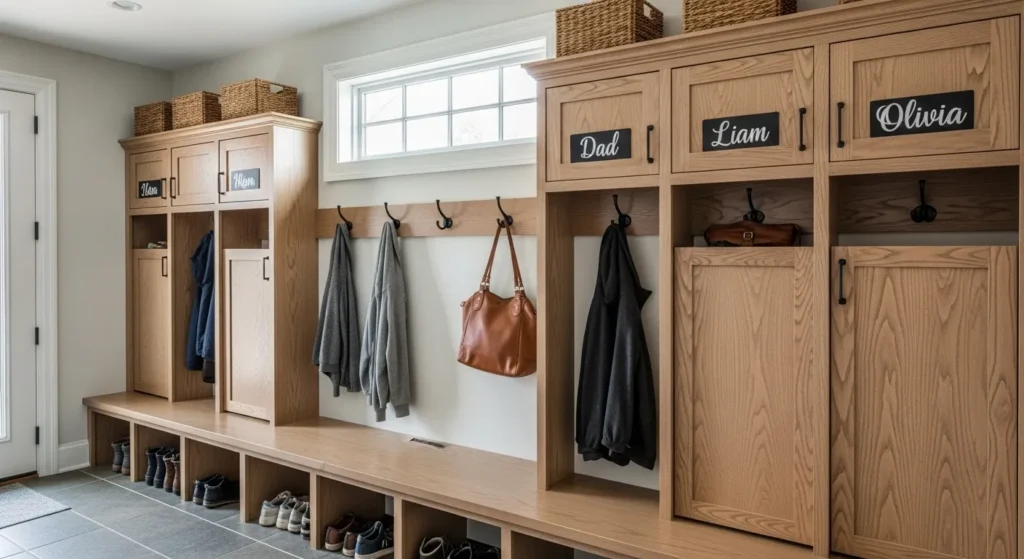
Maintaining Your Systems Long-Term
Organization is not a one-time project but an ongoing lifestyle. These habits help maintain your systems:
Long-Term Success Strategies:
- Review and adjust systems quarterly
- Do a annual purge of items you no longer use
- Teach family members to identify when systems need tweaking
- Celebrate successes to maintain motivation
Remember, the goal isn’t perfection – it’s creating systems that make your daily life easier and more enjoyable. Start with one area or system, master it, then move on to the next.
For additional home improvement projects that can support your organization goals, explore our guides on affordable backyard makeover ideas and eco-friendly cleaning solutions that complement an organized lifestyle.
Ready to Start? Your Next Steps
Choose one system from this guide and implement it this week. Start small, be consistent, and build momentum. Organization is a skill that improves with practice, and every small step makes your home more functional and peaceful.
The time you invest in setting up these systems will pay dividends in reduced stress, increased efficiency, and more time for the activities and people you value most.
